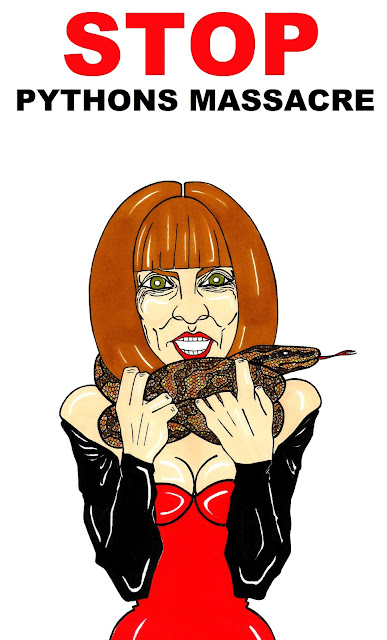STOP PYTHONS MASSACRE
VOGUE Editrix Anna Wintour
VOGUE Editrix Anna Wintour
by aleXsandro Palombo
Researchers say the growing demand for handbags and other fashion items in Europe is fuelling imports.
But the trade is so poorly regulated that it is extremely difficult to establish the true source of the skins.
The authors argue that in some locations, the methods used to kill the snakes are extremely cruel.
The snake-skin business is extremely lucrative according to this report, which estimates that half a million python skins are exported annually from South East Asia in a trade worth $1bn (£625m) a year.
International agreements such as the Convention on International Trade in Endangered Species (Cites) that are designed to protect wildlife do allow for some trade in these species.
But the report's authors say that when it comes to pythons the rules are being widely exploited. Snakes that are bred in captivity are allowed to be sold but the report finds that many so called captive pythons actually come from the wild.
The nature of the trade is such that there is a strong financial incentive all along the supply chain to use illegal snakes. A skin that a villager in Indonesia might sell for $30 (£19) will end up as a bag in fashion boutiques in France or Italy selling for $15,000 (£9,300). The highest demand is for skins between three and four metres long.
VIA BBC
